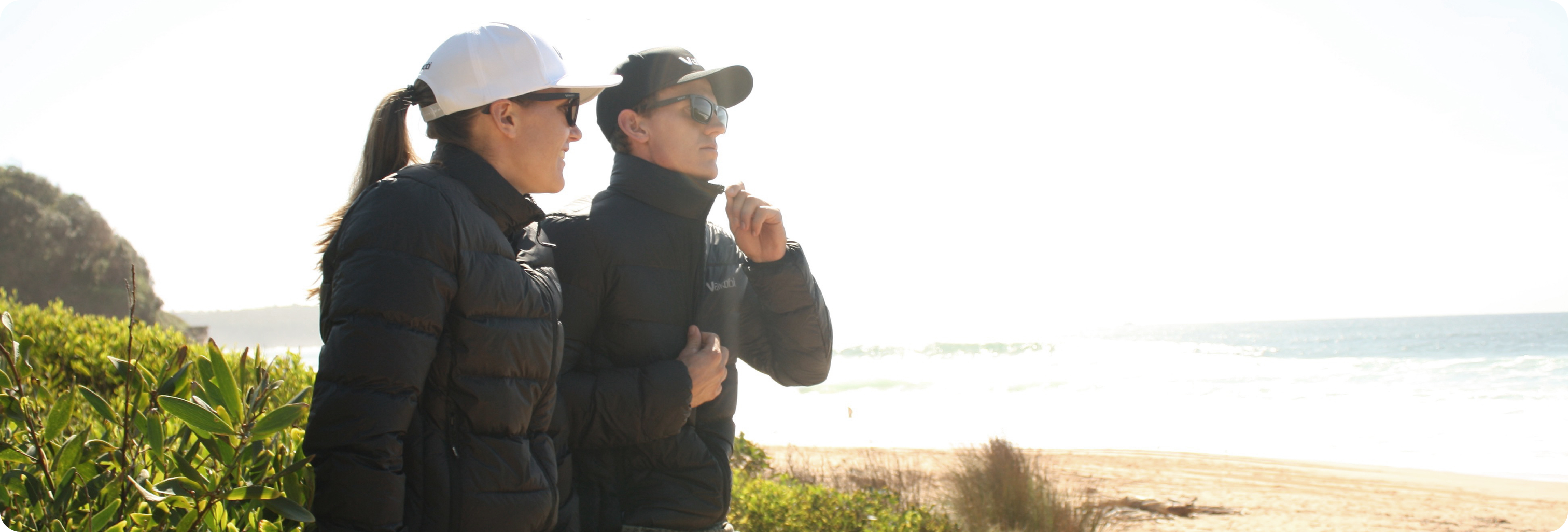Downwind paddling, often called 'downwinding', in rough ocean swells is one of the most addictive watersports out there. The on water equivalent of downhill mountain biking; it involves riding at full speed on challenging and ever-changing water and waves. In this article Vaikobi shares some expert techniques from pro downwind paddlers and lists the gear you need for safe and comfortable downwind foil boarding or downwind ocean ski paddling ride.
What is downwind paddling?
Downwind paddling is a type of paddling that allows you to surf your ocean ski or outrigger, riding between locations by tapping into the energy of the swell and wind direction. During a downwind run, the paddler needs to be fully present, to assess and adapt to constantly changing conditions, resulting in a super fun and exciting session. Once you start linking multiple waves together, you’ll get the addictive feeling of cruising and exploring the ocean effortlessly. It will definitely get you hooked, always coming back for more.
What is downwind foiling?
Downwind foiling (also called hydrofoiling or foil surfing) is the sport of riding a surfboard with a hydrofoil attached to it, by paddling or gaining momentum by body pumping or paddling. It’s a totally different sensation than other watersports, smoothly gliding on a cloud along the ocean. Read more about the difference between downwind foiling and paddling.
Why should I try downwinding?
Downwind paddling or downwind foiling are excellent ways to get more time on the water, because you can still have fun on days when the surf swell is not ideal. Also, it gives you the chance to improve your surfing skills, by training your balance, control and cardio.
How to downwind paddle
Downwind paddling technique involves constant weight adjustment. You need to develop the ability to assess the water conditions to position the board, and time your maximum power stroke to catch and ride the wave. During a downwind session, your goal is to stay on a bump as long as possible and to steer while you’re on the bump or immediately after, avoiding a nose dive. Expert and Olympic Paddler Simon McTavish explains “The best way to tackle a bump that’s coming is to increase your stroke rate and power on each stroke. Once you catch the wave, the goal is to keep the momentum and steer the boat towards the next set of bumps that you can link together. It’s important to remember that speed and momentum are your friend and they unlock greater riding potential. I like to think of it as always keeping the nose of my boat facing downwards.”
Speed plays a key role in downwind paddling: you need to be paddling at the speed of the waves passing underneath your board / ski. Getting in sync with the swell at a consistent speed allows you to see the waves forming in front of you, choose the right ones to link together and ultimately to have a smooth ride. It will take some practice at first to get the right speed and angle, so be open to try different directions and approaches until you find the style that works best.
Downwind paddling tips
Before you sign up for your first downwind paddling adventure make sure you respect the key safety rules:
- Don’t go alone: get local experts or experienced riders to guide you for your first downwind sessions, it will make a huge difference on your experience and overall safety.
- It is critical to wear a leash and a PFD “As my goal is to constantly push the limits of this sport, it’s important to be able to focus on my performance on the water without worrying about safety. I know that if I ever push too far, Vaikobi always has my back, literally, with a V3 Ocean Racing PFD Life Jacket to stay afloat, and a Vaikobi Ocean Paddling Calf Leash to make sure I never lose my boat.” explains Austin Kieffer, Pro downwind paddling athlete.
- Plan the downwind logistics, like car pick up or drop offs to or from your destination.
- Start with shorter distance downwind sessions, a distance that could be covered in 60-90 minutes would be a good way to begin your downwind paddling journey.
- Check the weather forecast and take into account possible changes of the riding conditions; for your first sessions you should be looking for lighter wind, enough to create the whitecaps. Strong wind would create a big swell that might make you fall off a lot.
Is downwind paddling difficult to master?
Downwind paddling is a challenging sport. You need advanced paddling skills before you start your downwind paddle journey. But the exhilarating feeling you’ll get to experience once you get to smoothly link the waves together it’s definitely worth it.
What should I wear while downwind paddling?
Prepare your downwind paddling adventures by making sure you wear high performance quality gear. Vaikobi, a leader in technical watersports gear, offers paddling apparel suited for paddlers of all levels, from leisure to pro paddling athletes.
Zane Westwood, Pro downwind foil boarding athlete shares some of his favourite picks, for you to get inspired:
Watersports Thermal tops
UV50+ Rashies or rash tops
V3 Ocean Racing PFD Life Jacket
It’s not easy to put in words, images or even videos the excitement experienced during a downwind paddle session. In order to understand it, you need to try it yourself, to be fully immersed in it. So, give downwind paddling a try, it’s enough to get you hooked! But hey, it’s one of the best addictions you can get!
Have fun! Stay safe and enjoy the ride!

